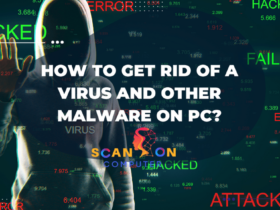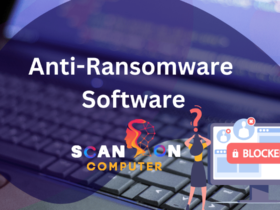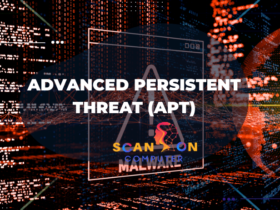Annually, many systems around the globe are compromised and sensitive data stolen by cyber criminals leveraging various vulnerabilities–often exploiting zero day attacks–in order to gain entry and steal assets.
As soon as a flaw is identified, hackers work quickly to exploit it. Software developers typically have one day (known as zero day vulnerability ) in which to fix it before hackers take advantage of it and exploit the zero day vulnerability.
What is Zero Day Attack?
Zero day attacks take advantage of newly identified vulnerabilities that hackers have not disclosed to software vendors, using social engineering techniques (phishing, whaling, weaponized attachments and impersonation) to gain entry to corporate networks and implement their exploit. Once inside, attackers can take advantage of this exploit to steal data or infect additional machines for further disruption or malicious mischief.
Cybercriminals often exploit zero-day vulnerabilities for days or even months before their vendor becomes aware and releases a patch to fix it. As patches take time to write, this creates a window of vulnerability between when an exploitable vulnerability is discovered and when a patch becomes available.
Therefore, it’s crucial to have top-of-the-line threat intelligence, to update software and hardware regularly, implement microsegmentation, and have a disaster recovery plan in place. Zero-day attacks can be detected by inspecting suspicious emails, unusual software behavior or monitoring network traffic – methods which Check Point employs to detect, block and notify its customers about such attacks.
How do zero-day attacks?
Each piece of software contains vulnerabilities that hackers exploit to manipulate the programs unintendedly. Hackers often detect these flaws by scanning code for errors or purchasing them on the dark web; once cyberattackers find such zero-day vulnerabilities they can exploit it to steal data, install malware, or control systems remotely.
Idealistically, security researchers working for white hat cybersecurity firms (like Trend Micro) should detect vulnerabilities before criminals do and notify vendors to create patches or workarounds quickly enough. Unfortunately, such efforts don’t always happen fast enough.
So when a zero-day attack strikes, it’s a race against time: attackers use malware exploiting the zero-day vulnerability and try to spread infection before vendors can publish workarounds or patches for it. Therefore, keeping systems patched up-to-date and conducting regular vulnerability scans are vital measures that may not prevent an exploit from taking place but can significantly mitigate its impact. Furthermore, regular backups allow businesses to recover quickly if an exploit compromises their systems.
Who are the targets for zero-day exploits?
Cybercriminals exploit zero day vulnerabilities to steal data, cause damage, and gain unapproved entry. Such attacks are hard to defend against and could cost businesses millions if they successfully bypass security defenses.
Attackers scour code and popular applications to discover vulnerabilities. Sometimes these vulnerabilities can even be purchased illegally on the black market. Once discovered, attackers analyze it thoroughly before creating malware programs or other technical means to exploit its flaw.
Zero day attacks provide attackers with unfettered access to sensitive or critical systems, often targeting organizations, government agencies, high-profile individuals or healthcare organizations.
Sony Pictures was attacked with a zero-day attack that crippled its network and led to sensitive corporate information being leaked onto file sharing websites. While its exact details remain unknown, it is believed that an advanced variant of Stuxnet was used to infect programmable logic controllers that managed assembly line machinery with malware and cause them to malfunction.
How to identify zero-day attacks?
Zero day attacks take advantage of vulnerabilities unknown to security teams or software vendors, taking advantage of vulnerabilities they don’t yet know about to exploit vulnerabilities before the vendor learns of it (known as time zero or “t0”) or releases an update patch (referred to as time one or “t1”).
Attackers exploit this weakness to penetrate networks and gain access to sensitive data from victims. Exploits typically deploy through email phishing or malicious websites that contain zero-day malware infections that compromise computers.
Zero day attacks are hard to identify using traditional antimalware software and firewalls because their signatures don’t recognize them; however, by increasing network monitoring with tools that detect suspicious user activity and app usage patterns can help identify potential threats more quickly.
Ethical hackers known as white hats often disclose vulnerabilities to product vendors so they can patch them before criminals do, though sometimes flaws like EternalBlue discovered by the National Security Agency but never reported to Microsoft are sold on the black market for targeted attacks such as WannaCry.
Vulnerability scanning
Zero day attacks occur when attackers discover flaws in software or code that is still unknown to the general public and exploit that vulnerability to gain entry to your systems and steal information or cause damage. Vulnerability scanning helps identify these threats so you can prioritize and mitigate them appropriately.
Vulnerability scanning can be done either internally or by an outside service, depending on your risk appetite and compliance needs. When hiring an external vendor, ensure it has an excellent track record in conducting vulnerability scans with zero false positives reported back.
Once a zero-day attack is out in the wild, time is of the essence for software vendors to find and distribute patches. Continuous vulnerability scanning is one of the CIS Critical Security Controls recommended for effective cyber defense; patch management, input validation and sanitization may also help mitigate risks related to zero day attacks by keeping hackers from accessing systems through malicious code execution; they also detect malware entering systems which might exploit vulnerabilities or exploit existing vulnerabilities that exist on them.
Patch management
An effective patch management process is integral to an organization’s success. Without one, businesses risk falling prey to ransomware attacks, data breaches and other cyber threats that compromise revenue, productivity and end user experiences.
Security patches are designed for many reasons – bug fixes, system improvements and security enhancements among them – yet often contain vulnerabilities which hackers exploit – making them the perfect targets for criminals looking to make quick money or cause chaos.
As soon as critical vulnerabilities are identified, they must be immediately rectified. Therefore, businesses should establish a patch management policy with a set timetable and set timeline to deploy new patches across assets. It’s also essential to prioritize assets according to risk and impact on business in order to ensure timely patch deployment – helping avoid any downtime due to unpredictable issues with patch deployment. Finally, businesses should practice defense in depth by updating systems with current patches while simultaneously adding extra measures for security.
Input validation and sanitization
Input validation and sanitization are two control measures used to strengthen application security. Validation involves comparing an input with a predefined set of rules to ascertain its legitimacy; this can range from something as straightforward as verifying only numbers are accepted into parameters to more complex measures like regular expressions and business logic.
Sanitization is the process of eliminating special characters that could trigger unintended behaviors in a system, from simple steps such as replacing symbols with their equivalent escape sequence to using specialized libraries that offer this capability.
Input validation and sanitization can help reduce zero day attacks, but are no panacea. Hackers typically find ways around security patches to create exploits to attack systems before their vendor can issue workarounds or patches; leaving a window of vulnerability between t0 to t2 – t1b + 1(t1a). The best way to decrease risks is using whitelist validation as much as possible in combination with output encoding (to prevent SQL injection) as well as controls such as escaping, filtering, validation.
How to protect yourself against zero-day attacks?
Zero day attacks cannot be protected against with just one solution, yet an organization must use an integrated security platform with visibility and control across IT ecosystems to substantially reduce threats. Organizations should implement a plan to respond quickly and carefully if they become victims of an attack in order to minimize financial and reputational loss; such plans should include clear roles and reporting structures, prioritize critical operations and set clear timetables for response.
Zero day attacks involve cyber attackers identifying an unnoticed software vulnerability not previously discovered by developers and creating a way of exploiting this flaw – enabling them to gain access to passwords, intellectual property or other valuable insights that they record and then sell for financial gain.
One effective method for protecting against zero day attacks is through regular automatic software updates that fix known vulnerabilities. This form part of an overall cybersecurity plan that also involves regular security scans, intrusion-detection systems and strong authentication protocols (like MFA).













Leave a Reply
View Comments